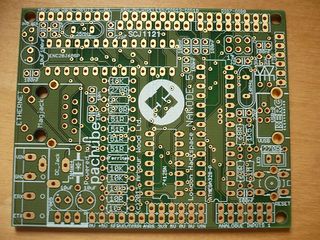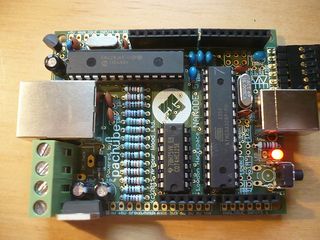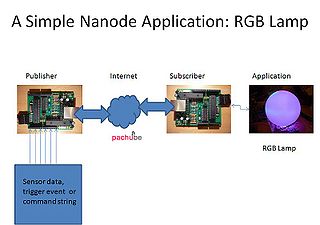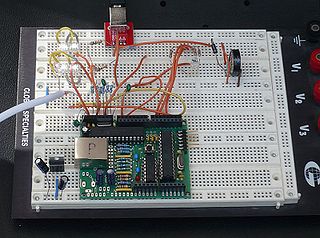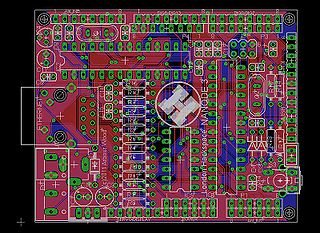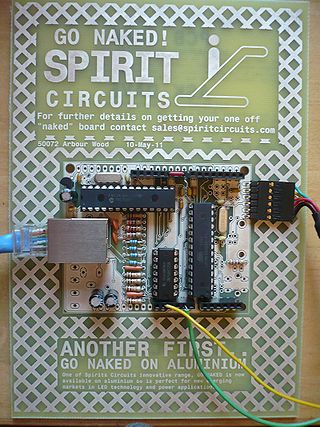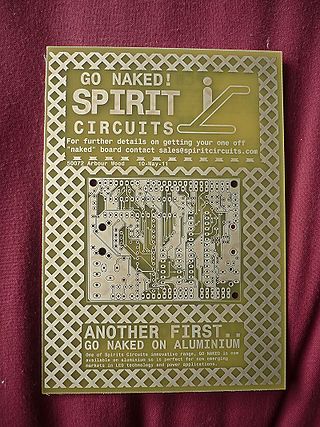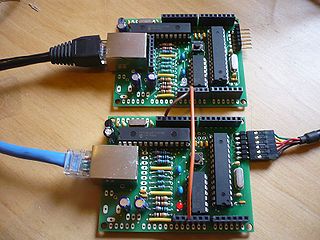Difference between revisions of "Project:Nanode"
m |
|||
| Line 153: | Line 153: | ||
TODO: discussion of the components, connectors, and the differences to normal Arduinos | TODO: discussion of the components, connectors, and the differences to normal Arduinos | ||
| + | |||
| + | |||
| + | Analogue 2 Connector | ||
| + | |||
| + | Pin Name | ||
| + | +5V | ||
| + | Analog Input 5 | ||
| + | Analog Input 4 | ||
| + | Analog Input 3 | ||
| + | Analog Input 3 | ||
| + | Analog Input 2 | ||
| + | Analog Input 1 | ||
| + | OV | ||
| + | |||
| + | Wireless& SPI Connector | ||
| + | |||
| + | Pin Name | ||
| + | +5V | ||
| + | 0V | ||
| + | SCK | ||
| + | MISO | ||
| + | MOSI | ||
| + | SS | ||
| + | INT | ||
| + | 3V3 | ||
| + | |||
| + | Digital 7- 0 Connector | ||
| + | Pin Name | ||
| + | Digital 7 | ||
| + | Digital 6 | ||
| + | Digital 5 | ||
| + | Digital 4 | ||
| + | Digital 3 | ||
| + | Digital 2 | ||
| + | Digital 1 | ||
| + | Digital 0 | ||
===Current Build Files=== | ===Current Build Files=== | ||
Revision as of 17:47, 4 June 2011
New page for Ken's new project 'Nanode' (formerly 'Ethernet Arduino') For full background and earlier work please see Ethernet Arduino
The Nanode homepage is at nanode.eu.
About Nanode
Nanode - a 30 second pitch
Nanode is an open source Arduino-like board that has in-built web connectivity. It connects to a range of wireless, wired and ethernet interfaces.
It allows you to develop web based sensor and control systems - giving you web access to six analogue sensor lines and six digital I/O lines.
It costs under £20 as an easy build it yourself kit. Nanode was designed with Hacking in mind.
Some Background
The Nanode is a low cost entry device aimed at network and Internet Connectivity projects.
It's name was originally derived from "Networked Arduino Node" as it essentially opens up the possibility of networking Arduino-like devices both to the internet, and locally using a mix of wired and wireless networks.
It has been conceived as an experimental platform, an enabling technology, which will allow applications to be developed at minimum cost and hassle.
It combines the functionality of the Arduino and an ethernet shield onto the one small board. This literally halves the cost of a net connected Arduino platform.
It has been designed with low cost hacking in mind and can be built easily for under £20 - so that it will appeal to those on a tight budget.
It uses the popular Arduino environment so will be familiar to many. It also accepts Arduino shields, and a wireless shield based on the popular RFM12 device is planned. This will open up the Nanode to wireless networking and creating bridges between wireless, and wired networks and the Internet.
Nanode consists of a small PCB which has the ATmega328 microcontroller, some glue logic, the ENC28J60 ethernet controller and a Magjack ethernet connector. The board only uses through-hole and DIL conventional components - so that it can be easily assembled by anyone who has basic solderng skills.
It makes an ideal project for a teaching workshop on web connectivity, and as such will appeal to Hackspaces for advanced Arduino workshops.
Nanode Applications
Nanode uses a Ethernet code library developed by Andrew Lindsay. Andrew has provided examples for a Twitter Client (using supertweet.net), a Pachube Publisher and Pachube Subscriber. Andrew has also developed code to allow DNS Client queries and sending UDP packet to a local network.
Nanode can be used as a micro web-server for simple home automation and control, be used to build web connected sensor networks and many other web connected applications.
For those wanting to tinker with M2M applications, two Nanodes can communicate data or commands via a web data service such as Pachube.
Another unique feature is that several Nanodes can be connected together on a multidrop serial bus and used for distributed control tasks, such as energy montoring or home automation.
The wired network supplies communications and power and can be made from low cost 4 core telephone cable. 12V power can be distributed around this network and used to drive relays and actuators such as door locks.
Nanode provides between 10 and 12 input/output lines of which 6 can be analogue inputs for sensors such as thermistors or used for voltage and current measurement. Three of the outputs can be used for PWM control of motors, RGB lamps etc. Radio control servos are easily interfaced to the Nanode.
Individual Nanodes can communicate via this network back to an ethernet connected "Master" unit. With RS485 driver ICs, the Nanode can be adapted as a DMX lighting controller, MIDI network or other serial control system.
Nanode features an extra row of I/O pins - compared to the standard Arduino. This row of pins can be plugged directly into a breadboard and brings all of the ATmega I/O pins and power onto the breadboard. This greatly simplifies prototyping new applications on breadboard.
By removing the ethernet controller and Magjack, it becomes a very low cost Arduino "work-alike".
Nanode was inspired by the work of several key contributors.
Tuxgraphics - who wrote the original ENC28J60 code library
JeeNodes - for all things small and node like and routines for the RFM12 wireless
Ciseco - for the idea of stringing nodes together with a simple protocol
And many others, whose work has contributed to this project.
Nanode is an Open Source Project.
Open Source Collaborative Projects
The Nanode is possibly the first open source collaborative hardware design project at the London Hackspace- conceived, designed, manufactured and coded by Hackspace members - for Hackspace members. As an exercise in the design and building of a simple but useful microcontroller product, Nanode will introduce minimum cost web connectivity.
London Hackspace Custom Nanode
Here's a first draft of the proposed custom Nanode for the Hackspace. The Big H logo is a bit wonky, but we should be able to correct that with a bitmap import. Roger Light is working on this and other minor layout tweaks.
This new board offers several improvements over the first prototype.
The reset switch is vertically mounted on the edge of the board - so it can be pressed even though there may be a shield fitted.
The LED - again on the board edge, is visible with a shield fitted.
The local serial bus is now a 4 way screw terminal block for very easy hooking up with 4 way telephone cable which supplies 12V power and the Rx/Tx and ground lines. Remote nodes could draw up to 500mA total at 12V for powering actuators, motors etc.
Auto reset now added from serial interface - this uses Pin 6 of the FTDI cable and works with Arduino IDE.
Virtual USB Added. Vusb USB is done in firmware negating the need for a £15 FTDI cable. We then use the same programming tool as Metaboard uses - cool.
How to Build a Nanode
Building a Nanode
The complete step by step build sequence is here Building a Nanode.
An older version for a previous design can be found on my blog
Parts List
This section needs updating to reflect the changes in Nanode 5 over the earlier prototype.
All parts are readily available. I recommend Cool Components in South London for several of the key items. Interested parties should try to pool component purchasing to access volume discounts.
* 1 ATmega328 microcontroller (with Arduino bootloader) - CoolComponents £5.00 (£2.81 without bootloader) * 1 ENC28J60 ethernet controller - CoolComponents 1.99 * 1 Magjack - CoolComponents £1.99
The remaining parts were found to be considerably cheaper from Rapid Electronics giving a kit cost of £18 if parts are purchased in 10 off. This includes all parts, pcb, shipping and VAT.
* 1 74AHC125 quad buffer 174-9617 * 1 16MHz crystal 161-1761 * 1 25MHz crystal 161-1783 * 4 22pF ceramic capacitors 114-1760 * 8 100nF ceramic capacitors 121-6444 * 2 10nF ceramic capacitors 121-6435 * 3 10uF electrolytic capacitors 945-1056 * 1 7805 5V regulator 156-4483 * 1 78L33 3V3 regulator 146-7768 * 1 2K resistor 934-1480 * 4 51ohm 1% resistors 934-3342 * 3 270 ohm resistors 933-9353 * 3 10K resistors 933-9060 * 1 tact switch 181-3689 * 2 8 way 0.1" SIL Sockets * 2 6 way 0.1" SIL Sockets * 1 6 way 0.1" right angle header * 1 2.1mm dc jack socket * 1 1N4001 diode * 1 3mm LED * 2 32 pin 0.1" header strips (for optional I/O connectors).
You will also need:
* 1 Nanode pcb - available shortly to Hackspace members * 1 FTDI USB-serial cable - becoming a standard bit of kit for talking to microcontrollers. * or similar USB to serial converter such as Sparkfun/Cool Components * 1 CAT5 network cable to connect to router
Board Layout and Connectors
TODO: discussion of the components, connectors, and the differences to normal Arduinos
Analogue 2 Connector
Pin Name +5V Analog Input 5 Analog Input 4 Analog Input 3 Analog Input 3 Analog Input 2 Analog Input 1 OV
Wireless& SPI Connector
Pin Name +5V 0V SCK MISO MOSI SS INT 3V3
Digital 7- 0 Connector Pin Name Digital 7 Digital 6 Digital 5 Digital 4 Digital 3 Digital 2 Digital 1 Digital 0
Current Build Files
The latest Nanode 5 build files have been put up on Thingiverse .
Earlier versions on Thingiverse are really for reference only and should not be treated as current. The following data relating to versions 2 and 3 is for information or historical reference only:
The first prototype Nanode 2j had a couple of minor layout bugs, these have been corrected in 2l. The EagleCAD pcb files have been uploaded to Thingiverse as a starting point, but potential users should read the bug-list on the schematic page.
I've now corrected the pcb errors and made some improvements. The Version 3d files are here on Thingiverse
1. Fixed the incorrect connections on the Magjack
2. Moved the reset switch to edge of board and allow for a vertical switch which can be pressed even if shield is fitted.
3. Moved the LED to board edge so that you can see it
4. The local comms bus and power now routed to a 4 pin screw terminal for easier connection
5. Added auto reset capacitor C17 on pin 6 of FTDI connector
6. Added pull-up resistor to /RXEN so that it defaults to FTDI connection
7. Removed surplus connectors
8. Added a H as a place keeper for the proper Hackspace Logo
9. Added text "London Hackspace NANODE 3" and Arbour Wood (c)2011 (My Firm).
10. Improved position of 3V3 decoupling capacitors on ENC28J60
11. Analogue input connector J12 now has GND pin
12. Implemented Virtual USB with connector P7 on end of the pcb - saving cost of FTDI cable!!
14. I think that these would be so cool on blue pcb board with white Hackspace "H" Logo
Example Applications
Nanode Applications
Now moved to the Nanode Applications page.
Projects "In the Wild"
- Nanode controlled RGB LED Lamp, with simple serial command interpreter - see my blog here.
- 6 channel temperature monitoring using Pachube - email Ken via LHS list for code.
Add links to your own projects...
Brainstorming
This section is for all potential applications and wild ideas of what can be done with the Nanode.
Some other ideas planned or on the wish list: - please feel free to add your own ideas/wishes. If you want to contribute to any of these ideas - go ahead!
1. A low cost, plug-in wireless shield using popular RFM12 wireless module would allow the Nanode to form the basis of wireless networks - as well as have compatability with JeeNodes and some of the CurrentCost Energy Monitoring devices. I'm currently working on this shield layout - Ken
2. Use of virtual USB to eliminate the FTDI cable - implememted on Version 4. Hardware done on V3 and V4 - firmware & bootloader need to be tested.
3. A serial configuration program. Allows the IP address and other configuration parameters of the Nanode to be easily programmed from PC/MAC. Nanodes could be given unique MAC and sub-address. Sam Carlisle and Matt Gaffen worken on this at the Pachube Hackathon.
4. A position for a surface mount SPI memory (either RAM or EE) on the underside of the board to allow web page storage or much needed RAM buffer space. Microchip 23K256 adds 32K RAM for £1. One SMT device as an option should be acceptable to most constructors. Done - on V4, will also work with non-volatile FRAM memory. Provision on V4 for Microchip 11AA02EU48 - unique MAC address from tiny 3 pin chip. - Ken
5. An energy monitoring shield for electricity and gas meter pulse counting - working on this with Glyn Hudson and Trystan Lea of openenergymonitor.org. -Ken
6. Define a simple serial network protocol to allow Nanodes to communicate
7. Improved firmware to allow easy access to and from Pachube for data exchange
8. Firmware to allow MQTT messaging
9. Experiments to define maximum data transfer rates across the various networks
10. Dedicated web forum / wiki for all Nanode co-developers: http://nanode.eu
As a simple example, a Nanode could read up to 6 analogue sensors, connected to its ADC inputs - such as temperature sensing thermistors or LM35 thermometer ICs. These temperature sensors are located in different rooms of the house, or outside, or on the hot water tank. Between them they give an indication of the state of the home heating. The temperature readings are published up to a Pachube feed, where they can be accessed by other devices. A Nanode subscribing to the feed reads the temperature data as a CSV string, strips out the numerical data and acts on its content. For example controlling a user display, operating relays which control the boiler for heating or hot water as it is required.
The CSV format which Pachube uses is flexible enough to cope with many types of data, or even direct numerical commands. A string of comma separated, numerical commands passed up to Pachube could be simply interpreted by any subscribing Nanodes to perform a specific action. The first number could be the address of the Nanode which you want to command, for example the one which controls the boiler relay.
Openenergymonitor have developed some very low cost Arduino based devices to read electricity and gas meters. One of these will shortly be released as an Arduino shield and could use the Nanode as its connection to the net.
The other main application of the Nanode is in Master/Slave wired networks. Several Nanodes are connected to a wired serial bus and distributed about the environment where they run sensing or control tasks - such as a home automation system or DMX lighting control system. Each slave can be addressed individually by a Master controller, which then connects via its ethernet connection to the web.
Slaves could store sensor readings in RAM (limited to 2K on the '328) and periodically be polled by the Master device to connect to the serial bus and upload its data. Data could be recorded straight off the serial bus using the Openlog serial data logger concept from Sparkfun Electronics. The Openlog code runs nicely on an Arduino fitted with a SDcard shield, so could be run on the Master Nanode. The Master could act as a SDcard based file server or storage to the serially connected slaves.
Help and Further Documentation
Questions & Answers & Feedback
If you have any queries - please put them here under the relevant section heading.
HARDWARE
Update 12/5/11 Version 5 is the latest Hackspace Version - see above for list of changes.
PCBs expected at the end of May. A Nanode Build and Applications Weekend is planned for June 4th / 5th.
Update 15/4/11
Roger Light has ported the Hackspace Logo and is making minor tidying operations to the pcb tracking.
See Thingiverse for earlier board files.
Is the local bandwidth between two nanodes enough to create an ethernet bridge in software? -- Answer to myself: the multidrop bus is in the range of 9600 baud.
The ATmega328 is not limited to 9600 baud serial. If the distance between nodes is short then 115,200 baud may be possible. You could also connect nodes together with I2C or SPI over short distances. Ken
PCBS & KITS
Can non-members join the PCB batch?
Yes - but note that we are currently only offering a full kit consisting of pcb and all components for £18.00. The first batch of 40 should be available in early May. We will hold a weekend workshop "Nanode Build and Test" session to coincide with the kits arriving.
Bare boards may be available at a later date, but for now the £18 kit is the only option being offered. A small donation to the Hackspace from non-members would be appreciated. Ken
PROGRAMMING
Will the Vusb code fit in the bootloader to allow it's use for programming the board ?
By all accounts, adding Vusb will make the Nanode appear like a Metaboard - which can be programmed by adding their programmer to the toolsuite in the Arduino IDE. Programming should then be a case of picking the Metaboard option. Metaboard Ken
CODE EXAMPLES
There's a 'readpachube' example in Andrew's 1.6 software release, which I presume is the Pachube subscriber. I can't see a publisher though - is that available from somewhere else ?
I have developed a Pachube Publisher and matching Subscriber which allows serial CSV text strings to be sent from one Nanode to another via my Pachube Feeds 9675. If you put a request email to the Hackspace mailing list,I will send you the files. You will need to add your own Pachube API Key. I've more detail on my blog here. Ken
Project Updates
June 4th Update - First Day of Nanode Weekend
A resounding success! 15 people attended and 22 Nanodes built up, tested and working.
To be repeated again on Sunday 5th.
June 1st Update - the pcbs have arrived!
Right on time a whole bunch of Nanode pcbs arrived.
The first one has been built up, tested and is now running code - see photo.
Now have to build a few samples up in time for this weekend's Nanode Workshop.
Update 27-5-2011 Nanode 5 - DHCP Code Ready
Andrew Lindsay and I met up at the Hackspace on Friday afternoon, where Andrew demonstrated his DHCP connection process.
The Nanode was plugged into a spare router socket, and within a few seconds had done a DHCP request and been allocated an IP address. The Nanode then connected into Pachube where it subscribed to a data feed which was used to control an RGB LED. This connection process was fully automatic and proceeded without intervention.
25-5-2011 @Andrewdlindsay has just tweeted me to say that his code for ENC28J60 DHCP is now in GitHub see {https://github.com/thiseldo/EtherShield Github DHCP Code]
Update 20-5-2011 Nanode 5 - New Nanode Website
Nanode have a new website: http://www.nanode.eu
Update 18-5-2011 Nanode 5 - Latest Information - Nanode Weekend - Components Ordered
There has been a lot of activity with Project Nanode on several fronts over the last few weeks so I have decided to put the most relevant information and latest updates at the top of this Wiki. For older or historical information please scroll down further.
The batch of 100+ pcbs have been ordered and will arrive in the last week of May.
100 sets of components have been ordered, and will be sorted into kits prior to the first of the build sessions.
There will be a forthcoming "Nanode Weekend" at the Hackspace over the weekend of 4th and 5th June. This will be an opportunity to pick up your Nanode kit, assemble it under supervision of experienced hardware builders and test it out with the latest applications. There will be people on hand with firmware and network experience to assist you - if you are new to the world of networked sensors.
We will probably be running the same build/test workshop on each of the Saturday and Sunday, so those who can only attend on one day will not miss out. The event will be repeated on some other date(s)later in the summer.
I'm also looking for experienced solderers and those with their own assembly tools such as soldering irons/stations, side cutters, pliers, magnifying glasses to come along and assist others who may not have done much soldering. The Nanode 5 is almost entirely through-hole construction and assembly is relatively straight forward.
I'd like to run a mini production run on another date, to build up a batch of Nanodes for those who want to buy ready assembled.
Nanode 5 - Update 14/5/2011
Here is the first prototype sample of the new Nanode Version 5, built up on the rather funky free "Naked" board from Spirit Circuits. I have to admit that from an advertising perspective - this campaign by Spirit is certainly attracting some attention.
The naked boards are supplied without solder resist or screen print. This means that you have to be extremely careful when soldering, to avoid shorts between adjacent tracks. Additionally, as there is no component placement legend - fitting the components needs to be done with care and double checking. Needless to say, the prototype was assembled and tested with code running, and serving a simple web page within a couple of hours.
Nanode 5 has several new features which will need to have supporting application code written.
Firstly there is the new MAC chip. This contains the boards unique identity MAC address in write protected EEPROM. There are also additional bytes of eeprom, into which could be written some board specific configuration data, or some personalisation text eg "Kens Nanode 5".
Secondly there is the extended memory option. This is a SPI memory device fitted to the underside of the board which can be used for additional program storage or datalogging. If a 4Mbit flash were fitted you could make a very effective net connected datalogger.
Thirdly is the virtual USB programming connection. This has been used on the Metaboard project and provides the cheapest way to program the Nanode. It does however need a special programming application to be added to the Arduino IDE - and is another thing on the list to be implemented and tested.
Finally, as Nanode 5 has been designed to use the RFM12B wireless modules and be Jee Node compatible, there needs to be a new application to support the wireless mode.
A repository of all the various threads of Nanode code has been set up on Git Hub.
Nanode Version 5 - Update 8/5/2011
One innovative service from Spirit Circuits is to offer a "naked" pcb as a prototyping sample - for free! The catch is that it looks like this (see left) and carries all of Spirit's latest ad campaign messages. No such thing as a free lunch?
From an amateur/prototyping point of view, this is a great idea as it allows you to fully test your fledgling design before committing to a larger run. The Naked Nanode arrived this afternoon - just 48 hours after ordering.
There is no solder resist and no silkscreen for the component layout - just the copper tracks - and the holes, so you have to be very careful soldering to avoid solder shorts between tracks and pads. Some of the artwork on the Nanode are fairly fine and its way too easy to get a solder splash somewhere you don't want it.
I think that although it's a blatant advertising gimmick for Spirit - if it helps get the project done efficiently and with less risk - it gets my vote.
The updated pcb artwork is now complete and after checking the naked prototype this weekend, will be released to Spirit Circuits so that a batch of 100 boards can be manufactured. This will take approximately 2 weeks - so we expect to have Nanode pcbs available for assembly about 30/5/2011 ready for the Nanode Weekend - planned for 4th & 5th of June.
Following our recent build session in Snowdonia it was decided that from the outset, Nanode should make more use of wireless, and take full advantage of a low cost wireless module by Jee Labs. The circuit and connectors have been modified slightly so that the Jee Labs RFM12B breakout board will plug directly into one of the Nanode expansion connectors. This board is available for about £11 as a full kit or £4 for a bare pcb from Jee Labs shop.
Whilst in Snowdonia we also developed a low cost single axis solar PV tracker which uses a single radio control servo to angle a small PV panel directly towards the sun and record the power produced. Nanode has a 3 pin connector which will directly take an R/C servo controlled by Digital 4.
On the bottom of the Version 5 Nanode board is a footprint which will accept an 8 pin SPI memory device. This can be SRAM, FRAM or EEPROM/Flash. FRAM devices offer data retention after power off, plus the endurance of regular SRAM.
Flash devices up to 4Mbyte could be used to create a large file store on the Nanode, or used for serving fairly elaborate web pages Extending the memory of the Nanode will be useful for many applications. The device can be purchased for about £3.
Nanode also has a footprint to accept a unique ID MAC chip This contains a 48bit unique identity plus 2k bits of EEPROM memory which can be used for storing the Nanode configuration etc. This device is 38p from Farnell.
Nanode Version 5
The first batch of Nanodes will be labelled Version 5. This version includes the following enhancements over the prototype:
Custom London Hackspace Logo and the words "London Hackspace NANODE 5".
The Pachube Logo - and the words "Powered by Pachube". Pachube have been very generous and supportive of the Nanode Project.
The text "(c) 2011 Arbour Wood Ltd." Arbour Wood is Ken's design company.
Improvements to the labelling of the function of the various I/O connectors making connection simpler to get right.
Component layout shows the component values underneath each component eg 10K rather than R1 - makes building easier to get right.
Virtual USB and B type USB connector for programming (like a Metaboard) to eliminate most of the need for a FTDI cable. USB can provide power.
Includes 4 way screw terminal connector to connect the power and the local wired serial bus. DC jack option still exists but not used much as USB power available.
On board MAC chip - so that every Nanode has a unique identity. Uses Microchip 11AA02E48 which also has a few bytes of E2 rom. Included in price.
Space to add either a SPI EEPROM or SPI RAM. For storing web pages or HTTP buffer space. About £2 - £3 extra to fit.
LED now indicates whether the Nanode is connected to the local serial bus, rather than ethernet chip select!
Yellow and Green Ethernet LEDs now correctly indicate Activity and Link.
Improvements to the connector pin-out to allow a Jee Labs RFM12 wireless transceiver to be plugged straight in.
Update 20-4-2011.
The Nanode is firmware compatible with the JeeNodes Ethernet Node.
This means that a combination of a Nanode and a JeeNode wireless module can make a very easy wireless to ethernet bridge.
Jean Claude Wippler at JeeLabs already has a load of applications including one allow a JeeNode to be configured via a web browser. These applications should port across to the Nanode quite easily.
Andrew Lindsay, who is continuously improving the ethernet library for the ENC28J60, as used on the Nanode, reports that he has got a DHCP server app running on the Nanode.
He also has a small application which dumps ethernet packets to the serial port.
Update 14/4/2011.
The final changes are currently being made to the pcb layout and we expect to order these at the end of next week. Because of Easter and the following long bank holiday weekend, we expect pcbs back during the first week of May. We have had a generous sponsorship offer, which will allow us to buy sufficient pcbs for 100 Nanodes, and keep a small stock. After the initial 40 or so kits have been funded, these extra units can be sold towards project funds.
Test Drive a Nanode at the Pachube Hackathon April 8th/9th
This event went well and we built and tested a pair of Nanodes.
The next Nanode event at the Hackspace is provisionally planned for the weekend of June 4th/5th and will be a Nanode Build and Applications workshop. It's timing is dependent on the arrival of pcbs and kit components.
Soldering equipment, assembly tools (side cutters, magnifying lenses, "helping hands") will be required at this workshop. Network cables, USB cables and FTDI programming cables will also be in demand.
The first Nanode prototypes have been built and will be taking part in the Pachube Hackathon. Nanodes have been distributed freely to code developers and interested parties and we will have contributions from London, Newbury, Nottingham and Snowdonia. Some of these will be set up as live feeds of temperature sensor and energy monitoring data, others will be configured to act on this real time data.
Ken I hosted an impromptu Nanode build session at the space on Saturday 2nd April.
There was the opportunity to build up 2 pairs of Nanodes and get them talkng to each other via Pachube. There will be 4 Nanodes available for the Pachube Hackathon, with priority given to LHS members. Even if you are not at the event, but want to play with the Nanode at the space, during that event, let me know.
This first build session went well I had the chance to talk to several people about the Nanode project. Stephen Blomley built up one of the kits on Saturday afternoon, got it talking to Pachube and took it home for more development. Sam Carlisle also started a kit which he finished at 4am Monday morning. He's working on an interesting concept idea called Nanode-HomeHub.
It looks like we will have a first batch of Nanode boards ready in early May. This gives a month to get some application example code running on the first 10 prototypes and develop a Nanode code library.
I will run a weekend workshop timed to co-incide with the arrival of the first kits - a Nanode Build and Application Workshop. Ken
Board waiting list
Elliot has started a Pledge Page so that we can pool component purchasing and get the best price. The cost is £18 per Nanode which is a full kit of parts including pcb.
I would like to do a special London Hackspace branded version with a custom LHS logo on the screenprint. If anyone with EagleCAD experience would like to assist with this artwork please get in touch. As soon as we have this artwork and a minor board update, we can order the next batch. --Ken
Now that we have reached 30 boards, we should consider collecting some money and getting a batch of pcbs ordered from Spirit Electronics. I think that 2 square feet of board will just about fit 40 boards. --Ken
The First Prototypes
Here are the two boards each connected to a network port. The orange and brown wires between the boards is so that they can share the 5V power from the FTDI cable.
The upper board is the Publisher (Putter) and the lower board is the Subscriber (Getter). Every few seconds the Putter sends a new packet of data up to Pachube feed 8729, and at regular intervals the Getter subscribes to this feed to retrieve the data. In this case the data is a simple comma separated list of 6 arguments, which could be six readings from the ADCs on the Putter device, or a numerical command to which the Getter will respond.
